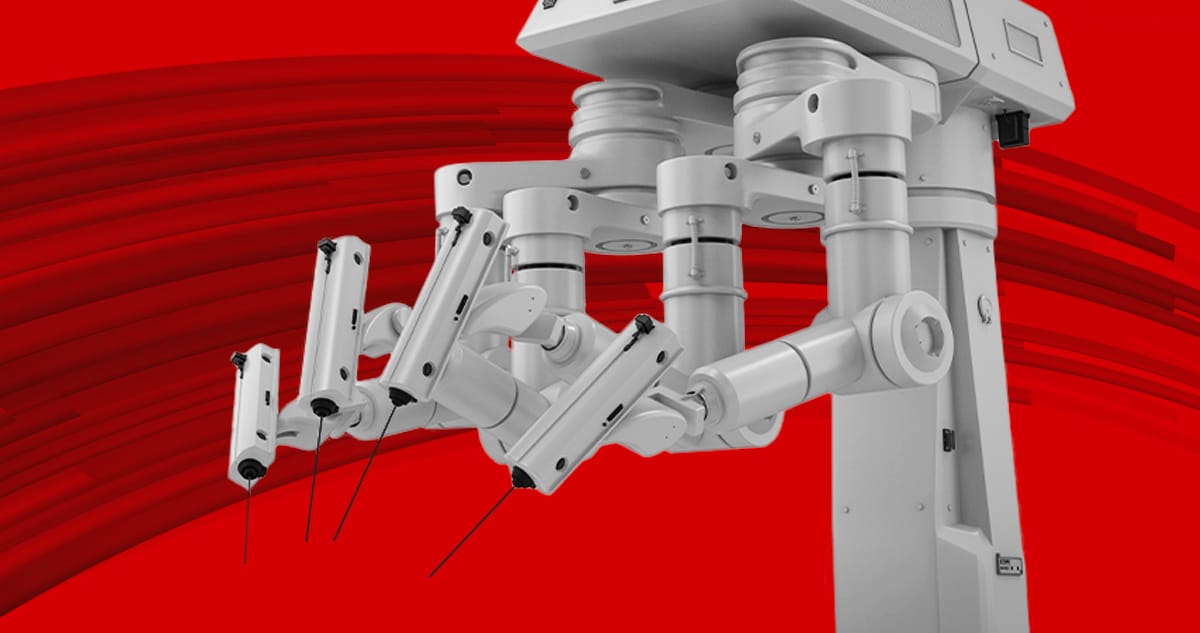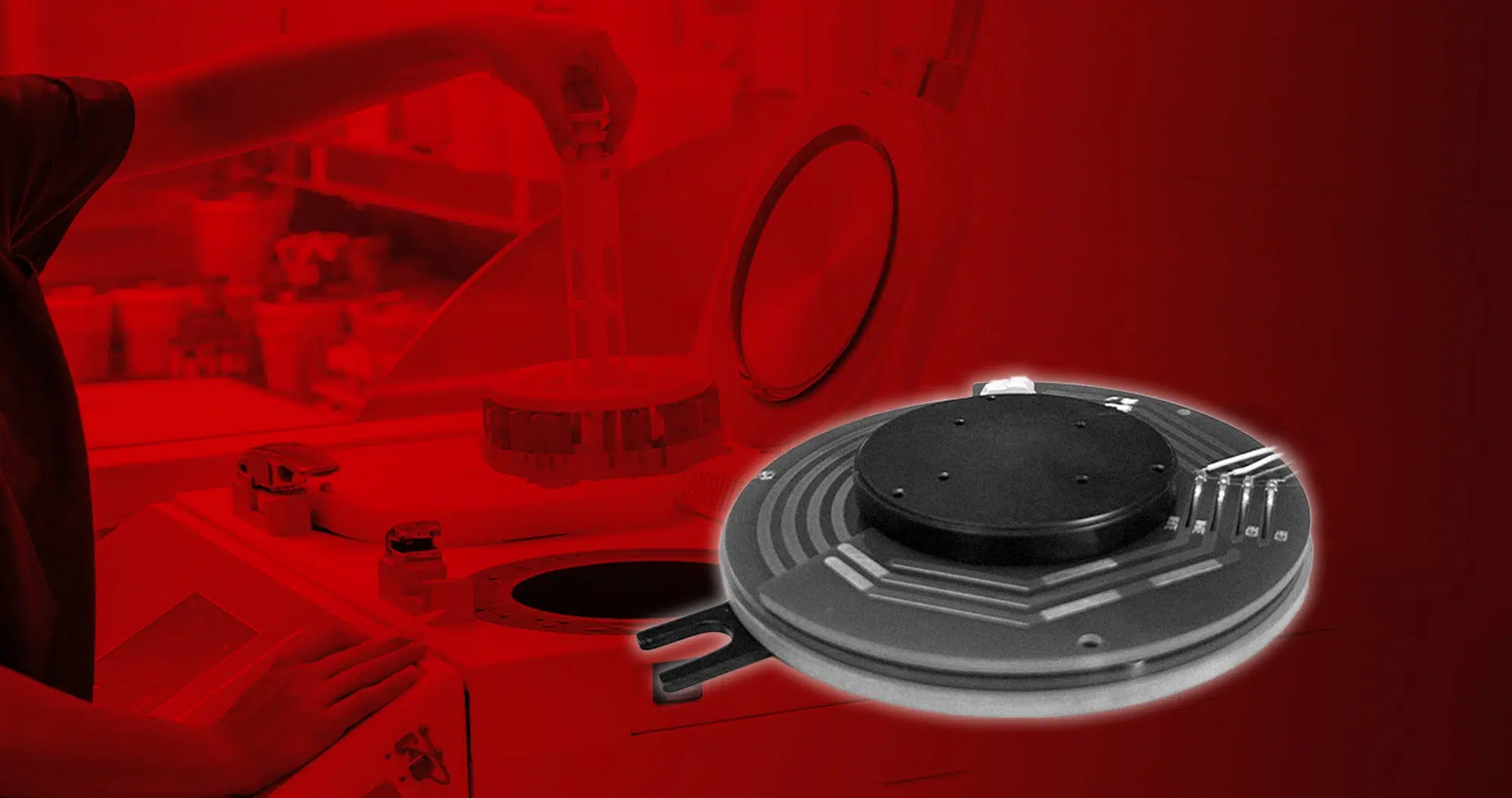Introduction Robotic surgery represents a significant evolution in medical technology, offering advanced precision and operational control. Central to the optimal functioning of robotic surgical systems are […]

Introduction
Robotic surgery represents a significant evolution in medical technology, offering advanced precision and operational control. Central to the optimal functioning of robotic surgical systems are slip rings or electrical rotary joints, which are essential for the continuous transmission of electrical signals and power between the stationary and rotating parts of the system. This uninterrupted transmission ensures accurate manoeuvrability of the robotic surgical instruments while maintaining stable electrical communication during operations. Slip rings are therefore key components that contribute to the precision, flexibility and effectiveness of robotic surgical procedures. For technical personnel and engineers involved in the development, maintenance and innovation of robotic surgical systems, a thorough understanding of the functionality and applications of slip rings is essential. This article aims to outline the role and importance of slip rings in robotic surgical systems, exploring the benefits derived from their implementation, associated challenges and future perspectives in the field of surgical robotics.
Slip Rings in Robotics
The increasing complexity of surgical robots, due to the integration of more sensors and the more precise control of motors and other movements, has emphasised the importance of slip rings. These devices enable continuous and reliable transmission of electrical signals, which is essential to ensure accurate real-time monitoring and control during surgical procedures.
With the aim of making surgical robots more agile and adaptable to operational requirements, the industry is seeking to reduce and compact the technological solutions employed. Slip rings contribute to this goal by allowing a compact and reliable electrical connection between the fixed and rotating parts of robots, without compromising the precision or speed of the system’s response. Their integration is therefore crucial to maintaining a small footprint profile, facilitating the manoeuvrability of surgical instruments in confined spaces.
In an industry where reliability is vital, choosing a slip ring supplier that guarantees high quality and compliance is crucial. Slip rings must meet stringent standards of quality and reliability, as their failure could have serious implications for patient health. Therefore, selecting suppliers that can guarantee regulatory compliance and high quality manufacturing is a priority consideration for engineers and professionals involved in the design and maintenance of robotic surgical systems.
Benefits
The adoption of slip rings in surgical robotics systems results in numerous advantages that contribute to optimised operational performance and patient safety. Below are some of the key positive aspects:
Space-saving: Thanks to their compact design, slip rings help minimise the system’s footprint, facilitating greater manoeuvrability and allowing easier access to restricted surgical areas.
Operational reliability: In a field where every movement is crucial, the reliability provided by slip rings ensures that surgical instruments function correctly, minimising the risk of complications during surgery. Furthermore, especially with high-frequency buses, slip rings can guarantee reliable transmission of sensor signals, ensuring a timely and precise response of the robotic system to operational dynamics.
Reduced Maintenance: The robustness and long life of slip rings reduce the need for frequent maintenance, helping to reduce downtime and improve operational efficiency, thus ensuring a quick return on investment.
Adaptability: Slip rings can be designed and customised to meet specific requirements, offering the possibility of creating solutions tailored to specific customer needs. This facilitates seamless integration with different types of robotic surgical systems, allowing for greater design and operational flexibility.
The implementation of high-quality slip rings is therefore reflected in concrete benefits in terms of operational precision, reliability and patient safety, contributing to the overall effectiveness of robotic surgical procedures.
Quality Assurance and Compliance
In surgery, malfunctioning slip rings can have serious implications for patient safety, making it imperative to ensure their quality and compliance. Some key aspects are outlined below:
Customised design:
The design of slip rings must be adaptable to the specific requirements of robotic surgical systems, ensuring smooth integration and optimal functionality. In addition to customised design, advance planning allows testing and verification requirements to be integrated directly into the design, ensuring that the slip rings produced not only meet, but exceed expectations in terms of performance and reliability. The ability to plan customised tests and develop ad-hoc testing tools in collaboration with customers ensures further adherence to the specific needs of the surgical environment.
High-quality materials:
The selection of materials used in the construction of slip rings is crucial to ensure optimal performance. Particular attention must be paid to the selection of alloys and coatings that offer the best conductivity and wear resistance. In addition, surface treatments, such as plating and protective coatings, are essential to improve durability, corrosion resistance and other properties crucial for surgical applications.
Standardised Manufacturing Procedures:
The adoption of standardised manufacturing procedures, in line with international quality certifications such as ISO 9001, ensures consistency, reliability and conformity of product slip rings.
Rigorous Testing:
Once the manufacturing process is complete, it is essential to conduct a rigorous series of quality tests to ensure that slip rings meet all technical specifications and performance requirements.
Traceability and Documentation:
Comprehensive traceability and documentation of all stages of design, manufacturing and testing are crucial to ensure product conformity and provide a solid basis for analysis and troubleshooting if necessary.
Customer Support and Collaboration:
A collaborative approach with customers allows us to better understand their needs and provide solutions that meet and exceed expectations, with continuous support from design to delivery and beyond.
The primary goal is to provide high-quality, compliant slip rings that can support the precision and efficiency needed in delicate surgical environments, contributing significantly to the safety and success of surgical procedures.
Read more about our quality path [Read article](link to article 4T – Between Rotation and Quality The Path of our Slipring)
Challenges and Solutions
Surgical robotics represents an advanced field where precision, reliability and responsiveness are essential. Slip rings, representing a single point of failure for signal and power transmission between fixed and rotating parts, must ensure optimal reliability and performance.
Size reduction and miniaturisation:
The trend towards miniaturisation is essential to ensure that solutions are ‘agile’ during operations. This is particularly relevant in surgical contexts, where space is limited and precision is crucial.
Reliability and Risk Management:
The reliability of slip rings is crucial given the critical nature of surgical operations. A malfunction can have serious implications on the operation of the robot and, consequently, on patient safety.
Integration of sensors and haptic feedback:
The continuous increase of sensors, and consequently of generated data, usable for both motion control and advanced vision and prediction systems, requires slip rings capable of operating at high transmission frequencies. Limitations in haptic feedback can reduce the sensitivity of the surgeon, potentially causing harm to the patient.
Materials and Treatments:
The quality and performance of a slip ring is closely linked to the materials used in its construction and the surface treatments applied to improve conductivity, wear resistance and other key properties.
Custom Design and Testing:
The ability to design customised slip rings and provide for customised testing, including the development of ad-hoc testing tools, is essential to meet customers’ specific needs and ensure that slip rings meet the required quality and performance standards.
Future Innovations
Slip Rings for High Band Transmission:
The continuous increase in data generated and usable in motion control optics and advanced vision and predictive systems requires slip rings suitable for working at high transmission frequencies. One solution could be the adoption of Fibre Optic Rotary Joints (FORJs), which not only guarantee an almost infinite transmission bandwidth, but are also immune to electromagnetic interference.
RealTime Data Transmission:
Real-time data transmission is crucial for precise and responsive control of equipment during procedures. Future adoption of protocols such as FailSafe over EtherCAT (FSoE) could simplify system architecture and increase safety levels through fail-safe communication mechanisms.
Mechanical Customisations:
Mechanical customisations of slip rings can address specific challenges such as handling major cable pulls or external radial or axial loads, facilitating the integration of slip rings into robotic surgical systems and helping to solve specific mounting issues.
Conclusions
Surgical robotics emphasises the importance of slip rings in facilitating reliable communication between the fixed and rotating parts of systems, a fundamental support for precision in surgical procedures.
The review explored challenges and benefits associated with the use of slip rings in the surgical environment, outlining how they contribute to space reduction and operational reliability. Key challenges such as the need for miniaturisation, reliability, integration of sensors and haptic feedback, and the importance of custom design and testing were discussed.
In the section on future innovations, the potential evolution of slip rings responding to the growing needs for high-bandwidth data transmission and real-time transmission was highlighted, emphasising the importance of solutions such as Fibre Optic Rotary Joints (FORJ) and protocols such as FailSafe over EtherCAT (FSoE).
Selecting a slip ring supplier that adheres to strict quality standards is essential, given the critical importance of slip ring functionality for patient safety.
In summary, slip rings are a key component in the advancement of surgical robotics. Continuous optimisation and innovation in this field are crucial to further improve the effectiveness of robotic surgical procedures.


